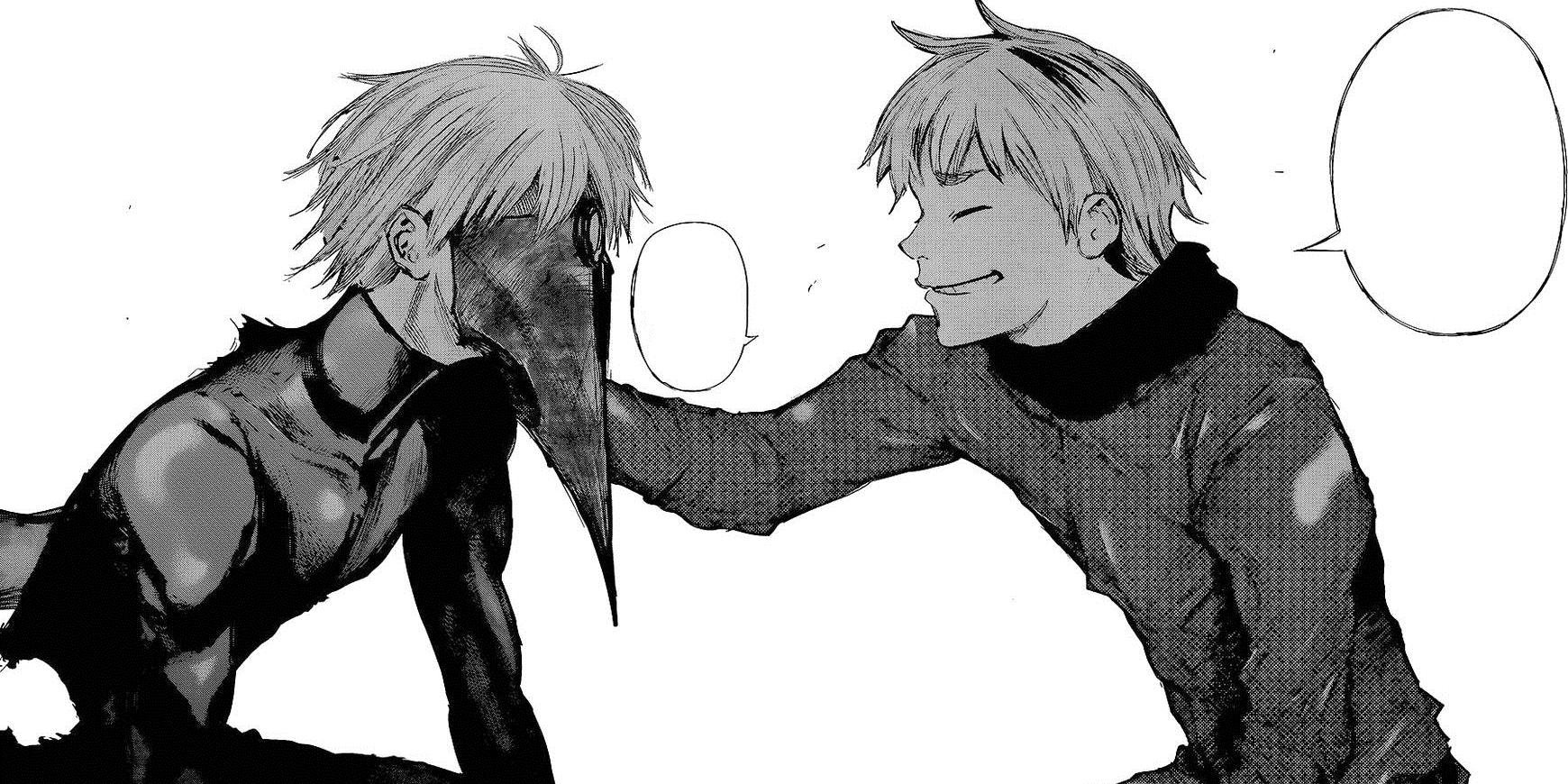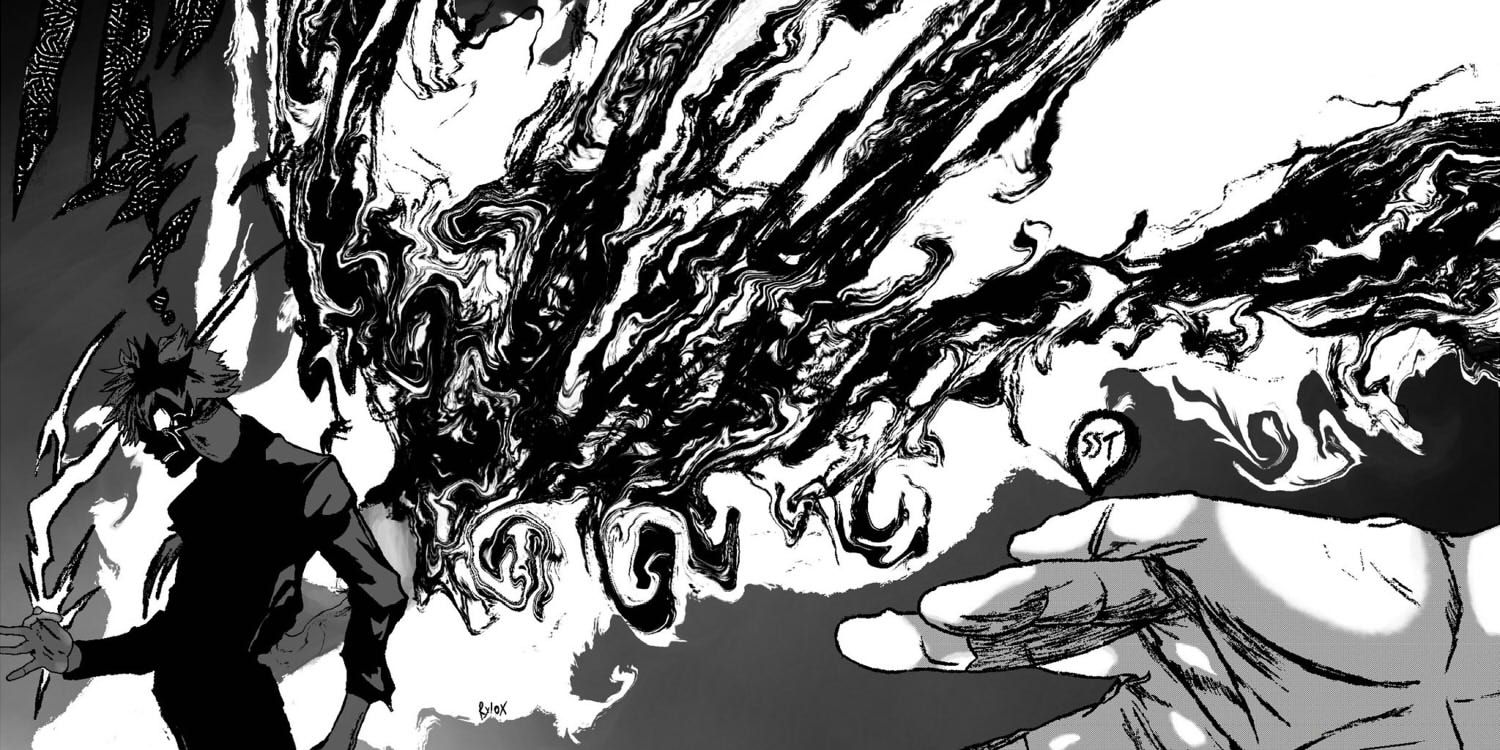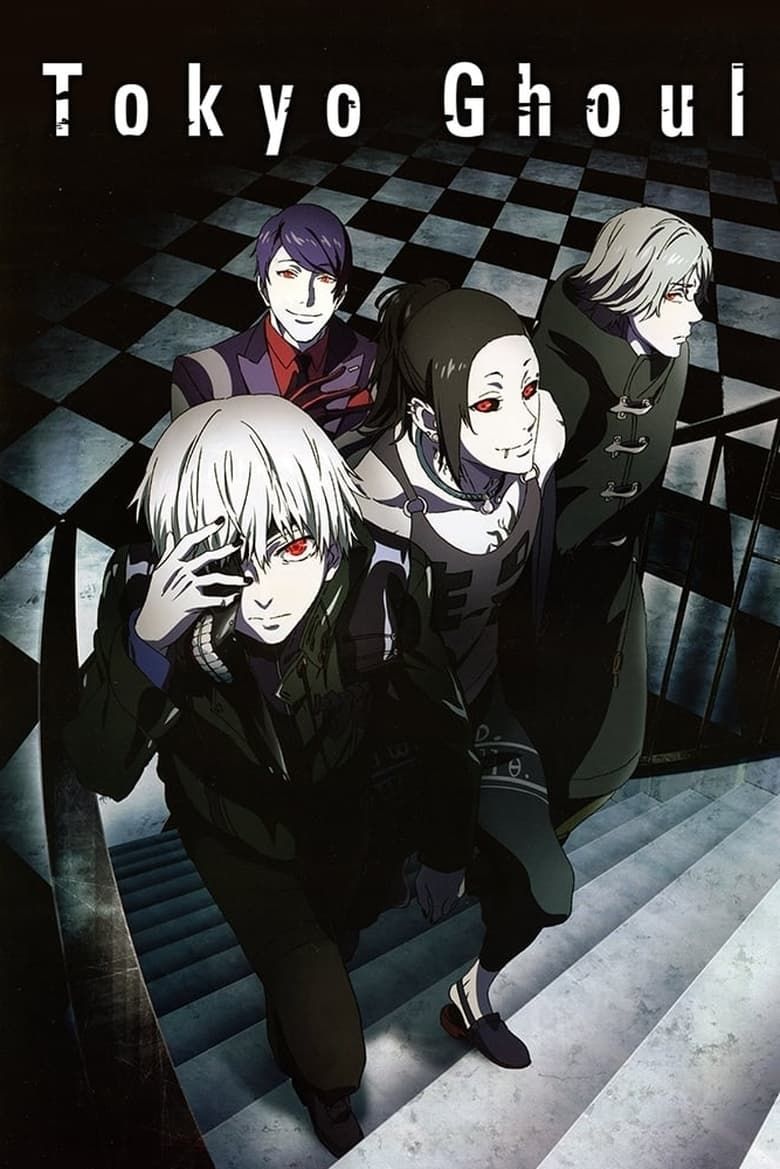The 2010s was a decade full of deliciously dark and edgy anime series, especially in the wake of Attack on Titan’s debut. The thing is, anime fans didn’t want just blood, guts, and gore. Those with a desire for twisted tales wanted a deeper narrative similar to what Hajime Isayama’s creation gave its audience. That’s exactly what Sui Ishida’s psychological horror series, Tokyo Ghoul, offered.
Tokyo Ghoul was one of the edgiest anime making headway in the mid-2010s. Like Attack on Titan, it carried a similar premise about a human-monster hybrid while unfolding a compelling story that was as memorable and meaningful as some of the most timeless novels of the past few centuries. Ishida managed to forge a tale so morbidly divine and complex, yet Studio Pierrot eventually failed to recreate his vision and kept it from getting the recognition it was meant to receive.
The Tokyo Ghoul Manga is Like a Well-Crafted Piece of Classic Literature

Image via Shueisha
The overall story of Sui Ishida’s Tokyo Ghoul wasn’t just dark; it was also incredibly twisted and heavy with numerous themes that were both difficult to discuss and controversial. It first presented the struggle of its main character trying to retain his humanity after a life-altering mishap, which was just the tip of the iceberg that drew people in. Eventually, the manga submerged its readers in the depths of a larger conflict that stretched far beyond the protagonist’s personal battles.
Ken Kaneki, the protagonist of Tokyo Ghoul, was just an ordinary human who lived in a world where creatures called “Ghouls,” a human-like species that needed to eat human flesh just to survive, existed. He was eventually caught in an incident that left him in a critical condition, and he was given the organs of a Ghoul under the guise that doing so would save his life. As a result, he was turned into a hybrid of these feared monsters and was thrown into the underbelly of Tokyo’s seemingly perfect society.
What Kaneki soon begins to learn is that Ghouls, despite their need for flesh, aren’t the mindless monsters that the media painted them as. They’re practically human. They look and function the exact same way humans do and grow up with their own dreams and aspirations like any other person. Unfortunately, many of them have been driven to desperation because of fear. Humans naturally wanted to protect themselves from being eaten, leading to the formation of the Commission of Counter Ghoul (C.C.G.)—an organization made specifically to eradicate Ghouls.
However, many of the C.C.G. investigators behave closer to villains rather than heroes of society, and the organization itself is full of unsavory conspiracy and needless cruelty against Ghouls. Afraid of being hunted, Ghouls had to go into hiding, which caused great difficulty for those with children or larger families. Attempting to find food just to survive risked discovery, and so many began to starve. The brutality is only furthered when it’s revealed that the weapons utilized by the C.C.G. to hunt down Ghouls are made from the body parts of dead Ghouls, meaning many people were killed with the altered remains of their loved ones.
Ishida spun a flawless narrative about the false dichotomy between humans and ghouls that could be compared to Mary Shelley’s Frankenstein. The hate that was bred between the two species filled Tokyo Ghoul’s storyline with themes of prejudice, social division, and survival alongside Kaneki’s struggle with his identity and the loneliness it brought him. The “monsters” of the story lived in fear of humans just as much as humans lived in fear of the monsters, thus blurring the line between the two. Just like Frankenstein, Tokyo Ghoul raised the questions: what does it really mean to be human, and what exactly makes a person into a monster?
Tokyo Ghoul’s Characters are Just as Deep & Complex as its Story

Image via Shueisha
Ken Kaneki is one of the most deeply layered and well-written characters in manga history and the perfect kind of hero for the story he was fated into. He was a college freshman who found solace in literature after a life full of hardship until everything about his existence was turned upside down, simply because he had braved going on a date with the wrong girl. Although he was rightfully upset about his horrific and life-changing situation, his empathy for others allowed him to realize just how hopelessly cruel and unfair the world could be.
The audience’s eyes are opened to the nuances of human nature, both the good and the ugly, through Kaneki’s perspective, while at the same time witnessing his own struggle of trying to maintain his sanity in spite of the massive amount of trauma he experiences. Throughout the course of Tokyo Ghoul, Kaneki goes through a series of major transformations that encompasses “The Fool’s Journey,” a mode of storytelling found in the Major Arcana cards of the classic Tarot Deck, which involves several stages of growth and character development.
Although Tokyo Ghoul is mainly centered around Kaneki’s journey and what he learns of the world around him, not one character is insignificant. The manga deals with an entire cast of multi-faceted characters such as Koutarou Amon or Kuki Urie. Both characters began their arcs with narrow-minded perspectives, only for their eyes to open after a series of harrowing experiences that chewed them up until they were shaped into better and more enlightened versions of themselves.
Ishida Heightened the Experience by Using Literary References

Image via Shueisha
Kaneki’s in-depth knowledge about literature, something that Ishida regularly works into the story, helps readers further understand the overarching plot and the journey that Kaneki and the other characters go through. One of the most notable authors that Kaneki references throughout the plot of Tokyo Ghoul is the Japanese author Osamu Dazai, who often wrote about existentialism, isolation, and despair. One such work that Kaneki’s journey is themed around is No Longer Human (1948).
Ishida was also influenced by Western writers, such as Franz Kafka. Kafka’s The Metamorphosis (1915) is used as a mirror to Kaneki’s story, as the main character transforms into an insect in much the same way Kaneki evolves through the various stages of a Ghoul. The character of Eto Yoshimura, another human-ghoul hybrid, is actually Kaneki’s favorite writer and is known for the book called “Dear Kafka.”
Tokyo Ghoul’s Potential was Ruined by a Subpar Anime Adaptation

Image via Studio Pierrot
Season 1 of Tokyo Ghoul debuted in July 2014. While it wasn’t entirely manga accurate, it still stayed faithful to the majority of Ishida’s original work. It was able to capture the complex narrative illustrated in every manga panel, setting up important character arcs—especially Kaneki’s—enough that the anime would have been able to eventually build up to the intricate and meticulous storyline that Ishida designed. Overall, that’s what made the Tokyo Ghoul manga so great; it masterfully unveiled a tragic world through the development and experiences of its characters.
The only major issue with Season 1 is that there was so much content in the source material that the anime had difficulty tying together every element in a way that suited Ishida’s bigger plan. This could have been remedied in Season 2 by expanding on the lore and characters, but the initial problem was only made worse. Studio Pierrot derailed the anime from Ishida’s original design so much that it practically became a completely different story.
Major events and character arcs were either omitted, cut short, or significantly altered. One of the biggest examples of this was the fate of Hide Nagachika, Kaneki’s best friend. In the Tokyo Ghoul manga, Ishida had purposefully left Hide’s fate ambiguous to fans. However, Season 2 of the anime seemed to mark his death as something absolute, even changing the way that his supposedly final encounter with Kaneki went down.
Hide’s Season 2 death was a mistake that the anime tried to rectify in the later Tokyo Ghoul: Re anime adaptation; however, by then, so much had been irreversibly changed that it deterred much of the manga’s fanbase. Ishida had laid out so much in the manga, such as details and subplots that were eventually circled back to and satisfyingly completed, that the deviations the anime took heavily affected the final product. In the end, the Tokyo Ghoul anime lost its potential to become an iconic and nuanced dark urban fantasy and was reduced to a watered-down and skewed version of Ishida’s carefully crafted masterpiece.
As quoted by Cesar A. Cruz, “Art should comfort the disturbed and disturb the uncomfortable.” That’s exactly what Sui Ishida’s story was, a work of art that brought attention to the darker side of humanity in extremes. The Tokyo Ghoul manga is deeply layered and incredibly well-put together despite the massive amount of lore and the various characters it worked with, making it a story that rivaled anime’s most acclaimed classic, Fullmetal Alchemist. Tragically, it did not get the anime adaptation it deserved.

Tokyo Ghoul
Release Date
2014 – 2013
Network
Tokyo MX
Directors
Shin Matsuo, Taiji Kawanishi, Seo Hye-jin, Masayuki Matsumoto

Natsuki Hanae
Ken Kaneki (voice)

Sora Amamiya
Touka Kirishima (voice)


AloJapan.com